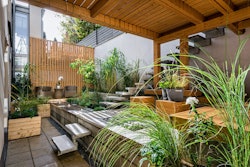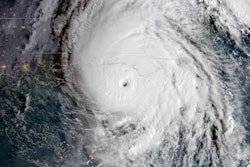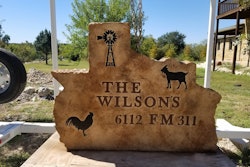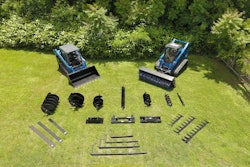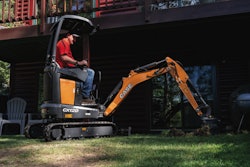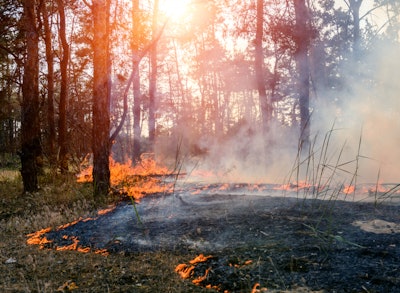
Firescaping is landscaping or landscaping practices that help protect your customer’s home from fire damages. The overall goal of this practice is to develop a landscape that has a design and plant selection that will offer the best defensive, survivable space when facing down a fire.
Typically, the end of summer and beginning of fall are the prime seasons for wildfires to make their way onto the scene, so now could prove to be an excellent time to begin talking to your clients about preparation.
While your landscape company’s coverage area might not be plagued by wildfires, it’s never a bad idea to take the Boy Scouts’ motto to heart and “Always be prepared.” If your customer has ever expressed an interest in firescaping in his/her yard, it’s good to have a few answers and ideas up your sleeve.
With wildfires being so unpredictable and destructive, customers in areas prone to fires may be inquiring more fervently about which plants and structures they can have in their yard that would cut down on the spread of fire, should it appear.
Take a look at what you need to know when preparing to firescape your customer’s lawn, as well as a few suggestions on what materials to use.
Knowing the zones and considerations
According to P. Allen Smith Garden Home, the area around a home can be broken down into defensive spaces. First off is the home zone, which begins at the edge of the house and extends out 6 feet.
Next is the yard zone, which picks up at the edge of the home zone and continues out another 30 feet. After that comes the brush and screen zone, which covers an additional 45 feet.
And finally, there is a woodland zone, which begins at 75 feet from the edge of the home zone and continues on to 100 feet. Each space should be landscaped following fire suppression guidelines, according to P. Allen Smith Garden Home.
“If you are a contractor/installer, you must ensure that your installation is in compliance with all necessary requirements, including referenced codes and standards — which often include manufacturer’s installation instructions,” the National Fire Protection Association states online. “If you are an architect, you must ensure that your plans and specifications are prepared to satisfy the necessary requirements to pass the approval process, including those requirements in the referenced codes and standards.”
According to extension.org, the area that’s 30 feet closest to a structure is considered the most critical defensible space area. In this area, highly flammable fuels need to be kept to a minimum, and plants such as well-irrigated perennials should be planted here. Other plant suggestions are non-woody or low-growing deciduous plants.
The U.S. Fire Administration recommends thinning trees and brush located within 30 feet of the home, and beyond that 30 feet, dead wood, debris and low tree branches should be removed.
Small trees and plants growing under trees should also be removed, as these allow ground fires to jump to the crown of the tree. When planting trees, be sure they are spaced 30 feet apart and are pruned to a height of eight to 10 feet.
Remember that more extensive landscape planning may be required for homes located on a brush-covered site above a south- or west-facing slope to create a defensible space.
Also take into consideration whether or not the site can be irrigated, as this will greatly affect the location of hardscapes, plant types and overall placements of both.
It also would be prudent to do a little bit of research on the area and talk to your customers about seasonal weather, local fire history, prevailing winds and the characteristics of native vegetation surrounding the site.
Plant and material selection
Naturally, plant selection plays a huge part in firescaping, as some plants will prove less flammable than others. A good rule of thumb is to choose plants that are low-growing, have high moisture content and have leaves and stems that aren’t resinous, waxy or oily.
P. Allen Smith Garden Home recommends the following options when choosing good firescaping plants:
- Dogwood
- Redbud
- Sycamore
- Magnolia
- Oaks
- Red maple
- Wild azalea
- Sweetgum
- Winged elm
- Black cherry
- Persimmon
- Florida soapberry
- Ferns
- Wild olive
- Sparkleberry
- Succulents
Plants such as wax myrtle, ornamental grasses, saw palmetto, yaupon holly, acacia, cypress, red cedar and more should not be planted close to a home or within 30 feet of a home.
Since they have a higher moisture content when in leaf and a lower fuel volume when dormant, deciduous trees are generally more fire resistant than evergreens. They also typically don’t contain flammable oils.
Along with avoiding flammable plants, it’s important to make use of nonflammable materials, such as rock, cement or brick. Also, taking advantage of driveways, patios, walkways, parking areas, water features, pools, ponds, fences made of nonflammable material or areas with inorganic mulches can help reduce fuel loads and create fuel breaks.


